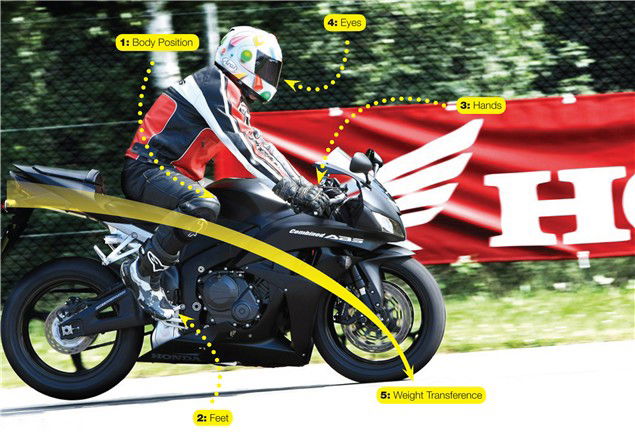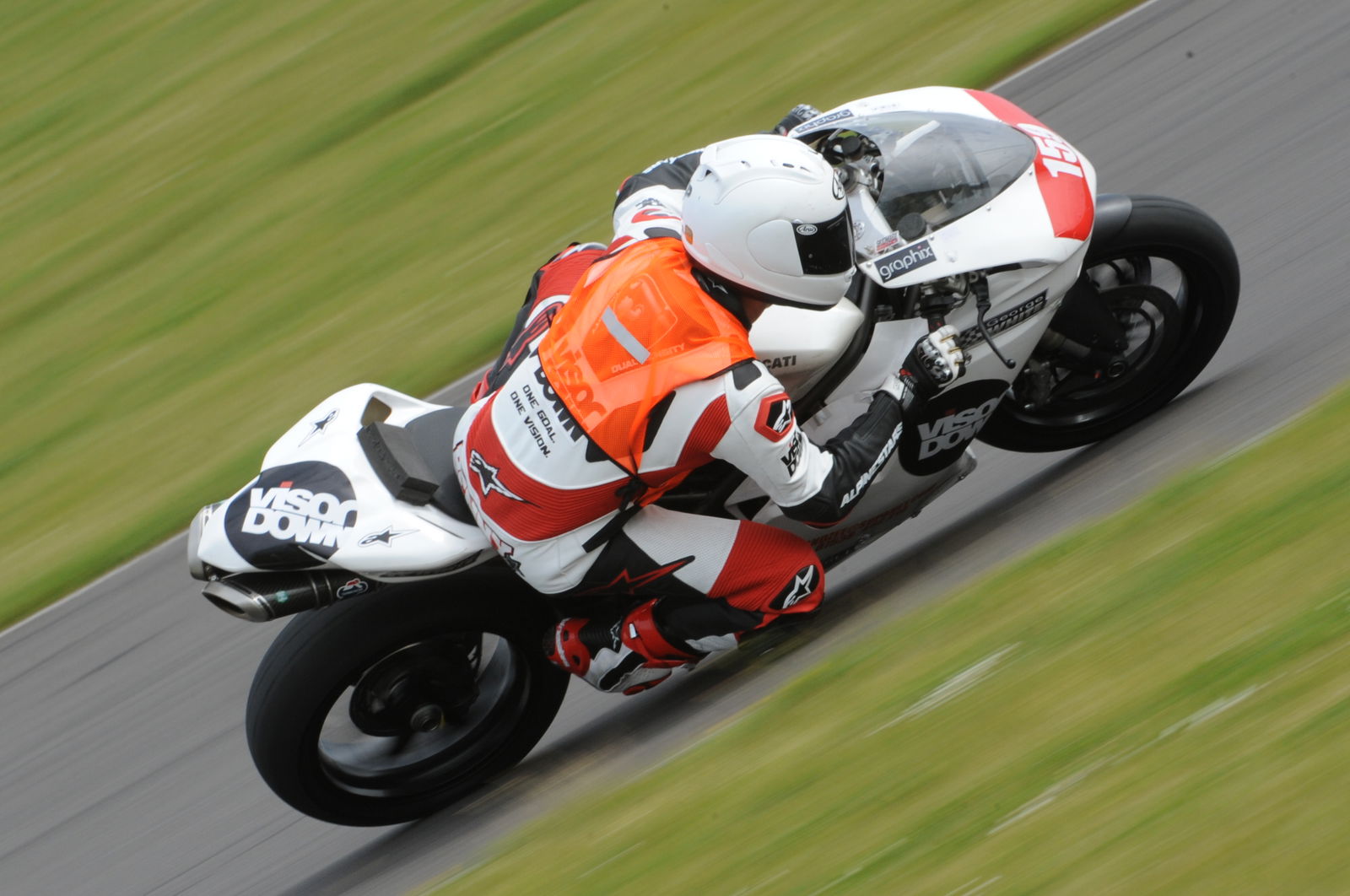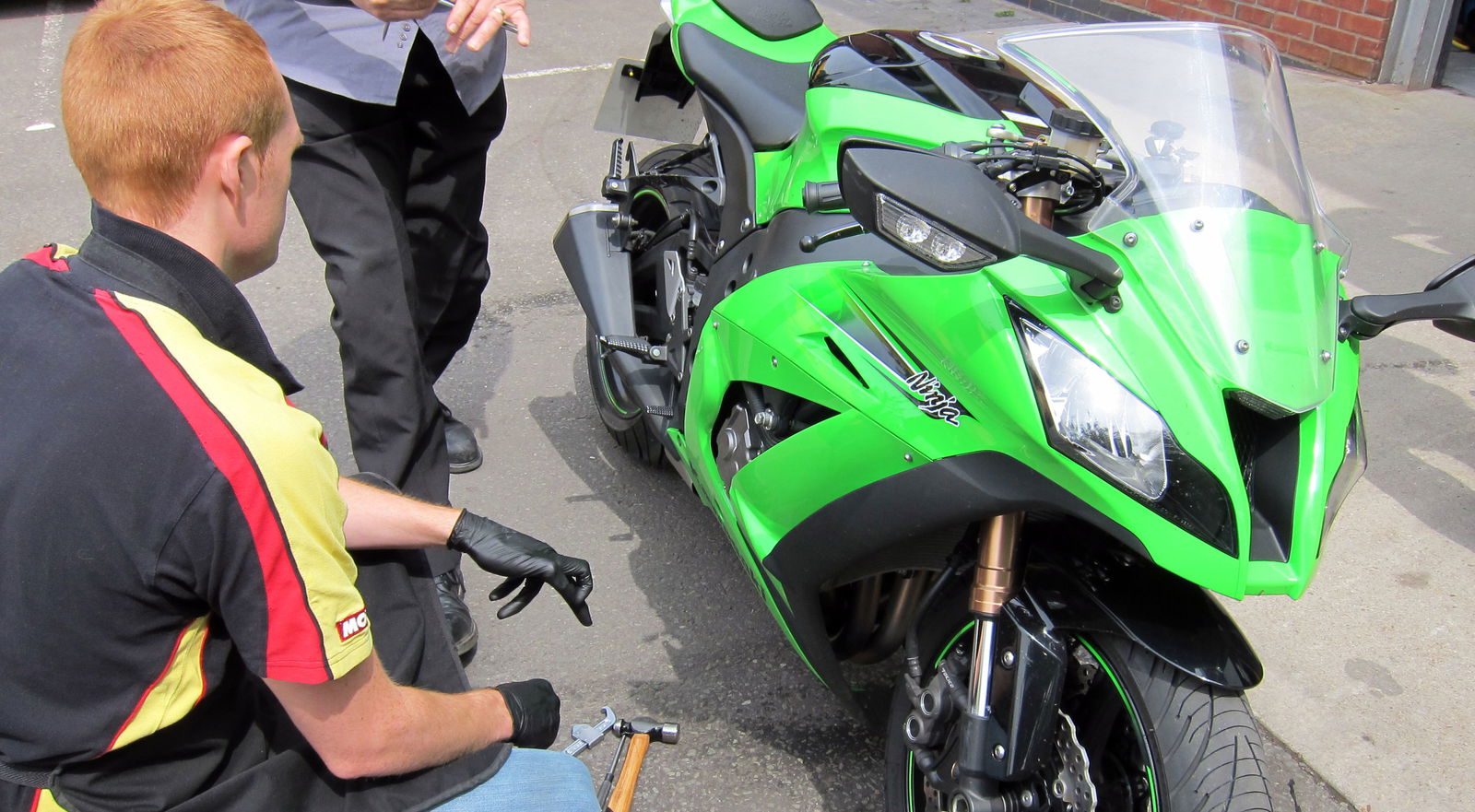5 steps for better braking
Want to brake like a pro? Read our guide


1: Body Position
When you're braking hard enough to hoist the rear wheel, it's effectively a brace position bracing your upper body against the g-force. Wrists, shoulder and forearms take the brunt of the force but you can make life easier for your upper body by gripping the back of the tank with your inner thighs. This is where Stomp Grips come in useful. Where you sit on the saddle plays a big part in how hard you can brake, too. Sitting as far back in the saddle as possible puts more of your weight over the back of the bike keeping it flatter and allowing you to brake harder as a result.
2: Feet
In this situation, with the back wheel already in the air - any application of back brake is useless so all the rider's concentration should be on the left foot and well-timed, positive backshifts a crucial part of retaining control of a back wheel skimming and hopping across the top of the tarmac. Engine braking is a useful form of retardation and often easier to control than a back brake lever on the basis that a booted foot is less sensitive than a gloved clutch hand.
3: Hands
These levers are mounted slightly too high for the rider. A wrist that's straight needs less muscle effort to withstand forces. Obvious, innit? Two fingers resting on the clutch allow the rider to feather the clutch before and after backshifts to prevent the back wheel from locking up. The right hand juggles with both squeezing the brake lever and blipping the throttle during gearshifts to match engine speed and road speed. Keep your hands and arms firm but not rigid, allow the bars to gently move side to side under heavy braking.
4: Eyes
You go where you look is as true in a braking zone as it is in a corner. You can't look far enough ahead after all, looking at your front tyre isn't going to help. The bulging of a rider's eyes is directly proportional to the amount of braking forces at work. If you look down at the ground infront of you, you'll brake less, fact.
5: Weight Transference
The moment you shut the throttle even before you start braking - the weight transference begins its cycle. The front fork springs start to compress and the rear shock begins to extend. The application of the brake lever in this stage needs to be slight but with a progressive build up of finger pressure as the pivoting force places more and more weight through the front tyre's contact patch creating more and more available grip. Apply too much braking pressure initially and you risk locking the front wheel but when the weight is acting in your favour (like in this picture) you'll be amazed how much front tyre grip is on hand.
Lacking front tyre confidence? Not sure how hard you can brake? Go and practice: build up lever pressure and increase the outright amount of braking force you use. It's what weekend-desolate industrial estates are for, isn't it?

